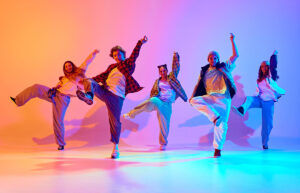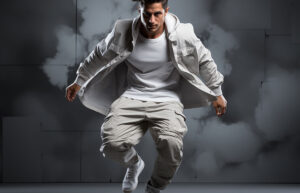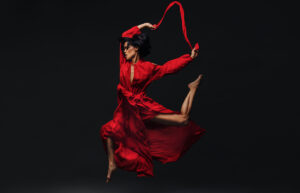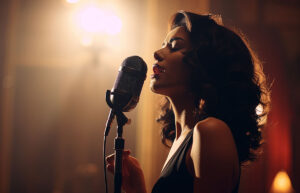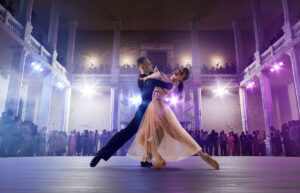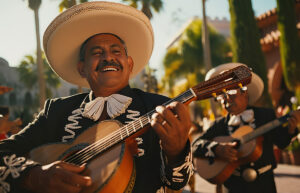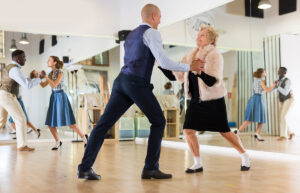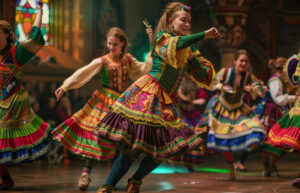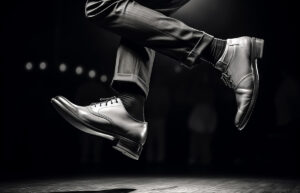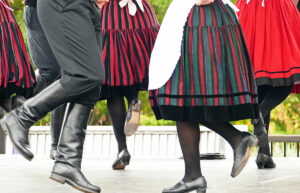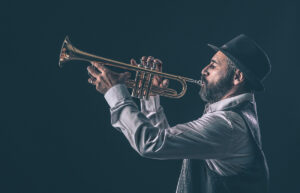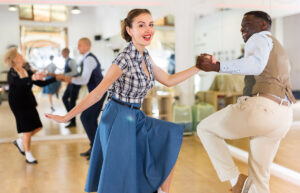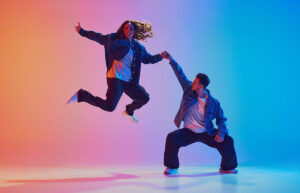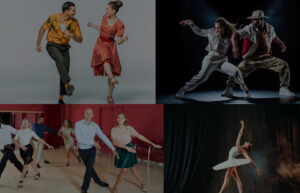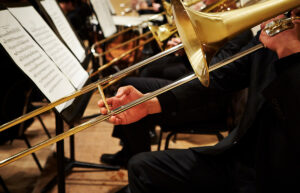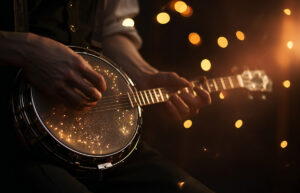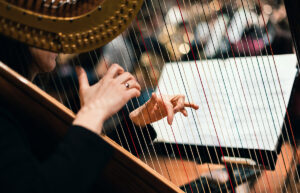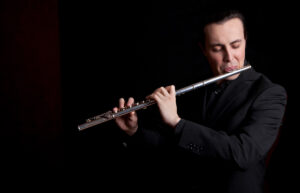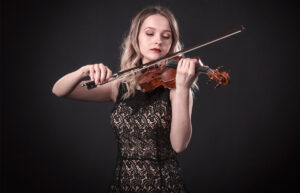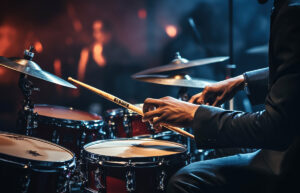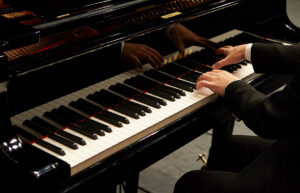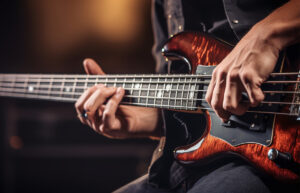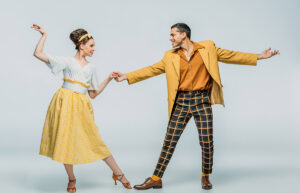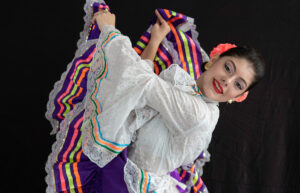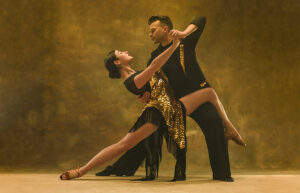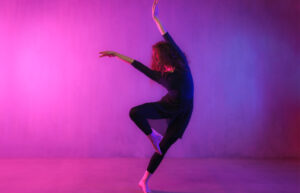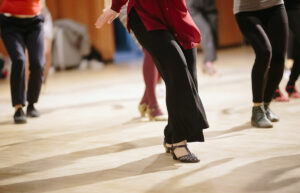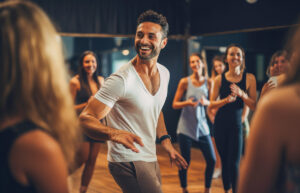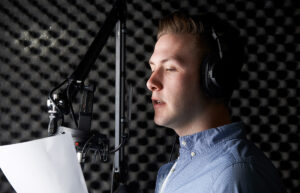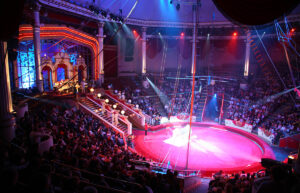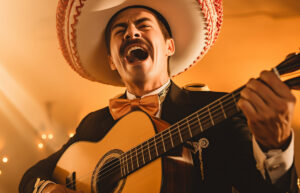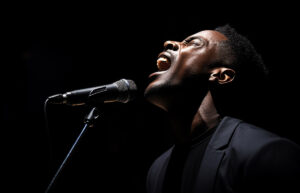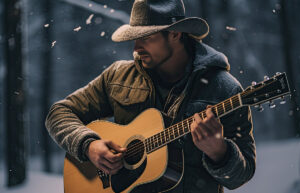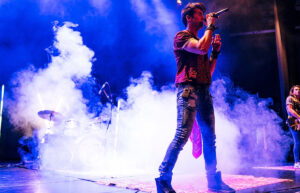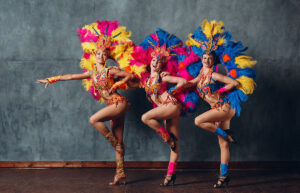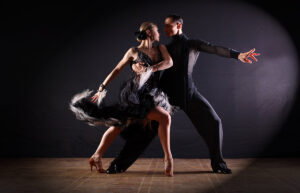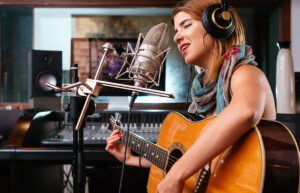How To Tap Dance? Types, Steps & Top Modern Songs

Tap dancing is a percussive dance form where dancers use their shoes to create rhythmic patterns and sounds. It’s an exciting and energetic dance style that has been around for centuries. In this article, we will explore the different types of tap dance, the basic steps for beginners and some popular modern tap dance songs to help you learn how to tap dance.
Welcome to TheDemoStop, now join the community!
Connect with artists, fans and producers around the world.
What Is Tap Dance?
Tap dance is a form of dance where the dancer wears special shoes with metal plates attached to the toes and heels. These metal plates create rhythmic sounds when the dancer’s feet strike the floor. Tap dancers use their feet to create complex rhythms and patterns, often accompanied by music.
Tap Dance Styles
Tap dance has evolved over the years and there are several distinct styles. Here are some of the most popular tap dance styles:
Broadway Tap
Broadway tap is a style that originated in the musical theater productions of Broadway. Intricate footwork, high kicks, and a strong emphasis on showmanship characterize it. The steps are typically more grounded and focused on creating a visual spectacle rather than emphasizing the rhythmic aspects of tap dancing.
Freestyle Tap
Freestyle tap is a more modern and improvisational style that allows dancers to express themselves freely. It incorporates elements from various dance styles, such as hip hop, jazz, and contemporary dance. It often involves incorporating movements from other dance styles, such as floor work, spins, and isolations.
Rhythm Tap
Rhythm tap focuses on creating complex rhythmic patterns with the feet. It is often performed without music, allowing the dancer’s footwork to be the sole source of rhythm. Rhythm tap dancers use a variety of steps, such as shuffles, flaps, and riffs, to create intricate rhythmic sequences. This style requires a strong sense of timing and the ability to maintain a steady beat.
Hoofing
Hoofing is an older style of tap dance that originated in the minstrel shows of the 19th century and became popular among African American performers in the early 20th century. A flat footed, shuffling style of footwork characterizes it. Hoofing involves a lot of sliding and brushing steps, as well as a more grounded and earthy style of movement.
Jazz Tap
Jazz tap is a style that combines the rhythmic footwork of tap dance with the fluidity and musicality of jazz dance. It is often improvised and involves a lot of syncopation and swing rhythms. Jazz tap dancers often incorporate elements of jazz dance, such as body isolations, turns, and leaps, into their routines. This style requires a strong understanding of both tap and jazz dance techniques.
Soft Shoe
Soft shoe is a style of tap dance performed in soft soled shoes rather than traditional tap shoes. It is often used in vaudeville style routines and involves more shuffling and brush steps than conventional tap. Soft shoe routines are more lighthearted and comedic in nature, with a focus on musicality and showmanship.
Buck and Wing
Buck and wing is an older style of tap dance that originated in the 19th century. It is characterized by high kicks, shuffles, and a focus on improvisation. Buck and wing dancers often incorporate acrobatic elements, such as splits and cartwheels, into their routines.
How To Tap Dance? Steps for Beginners
If you are new to tap dance, it is important to start with the basics. Here are some essential tap dance steps for beginners learning how to tap dance:
`1: Shuffle Ball
The shuffle ball is a foundational step that involves stepping forward or backward with one foot, then bringing the other foot to meet it in a shuffle motion. The shuffle ball helps to develop the ability to shift weight smoothly from one foot to the other.
2: Flap
The flap is a step where you strike the ball of your foot against the floor, creating a distinctive tapping sound. The flap is a crucial step in tap dance, as it allows dancers to create a variety of rhythms and sounds. It is important to master the proper technique to avoid injury and produce a clear, crisp tap sound.
3: Brush
The brush is a step where you brush the ball of your foot against the floor, creating a softer sound than the flap. It is often used to add variety and texture to tap dance routines.
The brush is a versatile step that can be used to create a range of sounds, from a gentle swish to a more pronounced scrape, depending on the amount of pressure applied.
4: Alignment and Posture
Proper alignment and posture are essential in tap dance to maintain control and balance as you move. Keep your back straight, shoulders relaxed and knees slightly bent. Good alignment and posture not only improve the aesthetic of your dancing but also help to prevent injury and improve your overall technique.
5: Maintain your Composure
Tap dance can be physically demanding, so it is important to maintain your composure. Breathe deeply and stay focused, even when the steps get challenging. Maintaining composure will help you stay in control of your movements and execute steps with precision and clarity.
Welcome to TheDemoStop, now join the community!
Connect with artists, fans and producers around the world.
6: Focus on Sound
In tap dance, the sound you create with your feet is just as important as the visual aspect. Listen carefully to the rhythms you’re creating and adjust your footwork accordingly. Developing a keen awareness of the sounds you are producing will allow you to fine tune your technique and create more complex and interesting rhythms.
7: Practice
Like any skill, tap dance requires consistent practice. Start with basic steps and gradually build up your repertoire. Practice regularly to improve your technique and muscle memory. Consistent practice is essential for developing coordination, stamina, and muscle memory required for tap dance.
8: Timing and Rhythm
While learning how to tap dance, timing, and rhythm are crucial. Pay attention to the music and make sure your footwork is in sync with the beat. Developing a strong sense of rhythm will take time and practice.
Tap Dance Songs
Tap dance has a long history in musical theater and many classic songs have been used for tap dance routines over the years. Here are some popular modern tap dance songs that can help you learn how to tap dance with some reference and inspiration.
Shake, Rattle, And Roll
This rock and roll classic by Bill Haley & His Comets is perfect for a high energy tap dance routine. This song has a simple, repetitive structure and upbeat tempo, making it an ideal choice for tap dancers of all levels to practice tap dance.
There Goes My Baby
There Goes My Baby by The Drifters is a great choice for a tap dance routine when learning tap dance that showcases your rhythmic skills. This song combines doo-wop vocals and a lively beat create a fun and dynamic backdrop for tap dancers to improvise and experiment with different steps and rhythms.
Get A Move On
Mr. Scruff’s Get A Move On is a contemporary favorite among tap dancers. Its funky beat and playful melodies create the perfect backdrop for a freestyle tap dance routine. The song’s unique blend of electronic and jazz elements provides a fresh canvas for tap dancers to explore their creativity showcase their style, and teach us how to tap dance.
Conclusion
What is tap dance?
Tap dancing is a percussive dance form where dancers use their shoes to create rhythmic patterns and sounds.
Tap dance styles
- Broadway tap
- Freestyle tap
- Rhythm tap
- Hoofing
- Jazz tap
- Buck and wing
Tap Dance Steps for Beginners
- Shuffle ball
- Flap
- Brush
- Alignment and posture
- Maintain your composure
- Focus on sound
- Practice
- Timing & rhythm
Tap dance songs
- Shake, Rattle, and Roll
- There Goes, My Baby
- Get a Move On
FAQs
What are the basic steps in tap dancing?
Some of the basic steps in tap dancing include the shuffle ball, flap, brush, and time steps. These steps form the foundation for more complex routines and combinations.
Are there different styles of tap dance?
Yes, there are several distinct styles of tap dance, including:
- Broadway tap
- Freestyle tap
- Rhythm tap
- Hoofing
- Jazz tap
- Buck and wing
How long does it take to learn how to tap dance effectively?
If you take regular classes learning how to tap dance, you will have a basic proficiency within 3 to 4 months.
Who is the father of tap dance?
Master Juba, aka William Henry Lane, is often credited as a tap dance pioneer and sometimes referred to as the “father of tap dance.” He was an African American dancer born in the early 19th century, likely around the 1820s or 1830s, and gained fame for his extraordinary dance skills during the mid-1800s
What makes a good tap dancer?
To be a good tap dancer requires lots of practice, patience, and determination. The following are the qualities of a good tap dancer:
- Technical proficiency
- Rhythm
- Creativity
- Stage presence



